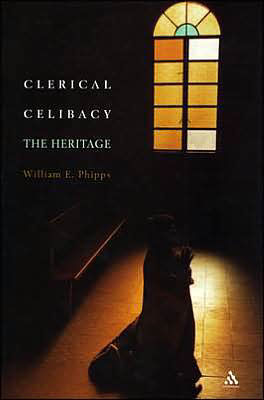
|
Posted May 22, 2006
Book: Clerical Celibacy: The Heritage Author: William E. Phipps Continuum. New York. 2004. Pp. 272 An Excerpt from the Jacket:
The crisis in the Catholic Church over sexual abuse scandals has raised numerous questions about the value of a celibate priesthood. Critics of the Church and the media have asked questions about the necessity of a celibate priesthood in the modern world and have wondered whether mandatory celibacy might have driven priests to seek ways to channel their unfulfilled sexual desires in inappropriate ways. Phipps provides a helpful overview of the heritage of clerical celibacy. Celibacy is a relatively new innovation: the Church only made it mandatory in the early Middle Ages. Phipps gently leads his readers on a journey through history as he explores the development of celibacy as a doctrine as well as the various consequences such an edict had for the priesthood. He allows celibate priests to speak for themselves about their own experiences of celibacy, and he examines the cultural consequences of mandatory celibacy in the Church today. An Excerpt from the Book: William Hoyt aptly questions the strong marriage sanctions in some professions: Does one have to be sexually active to be sexually authentic? Rather, is it not the fully sexed person who can decide what his sexual role will be without feeling the need to prove to himself or anyone else that he is virle? . . .One may ask whether the unofficial but widely enforced rule that Protestant ministers must marry has always had wholesome results. A man can be called to be a minister without being called to be a husband and father. Indeed, is not marriage a requirement not only in the ministry but in many other segments of our society for those who wish to be promoted in the organization, or included in the social life, or become eligible for income shelters? . . .We need liberation for those who wish to live a celibate life; we must grant them the recognition that they too may be dealing authentically with their sexual nature. Table of Contents: 1. Introduction My approach: Defining Terms 2. The Pre-Christian Era Jewish culture Pagan Cultures 3. A Celibate Jesus? Arguments pro and con His sexual orientation 4. The Apostolic Ear Paul's letters Other New Testament writings 5. The Patristic Era Movement toward sexual abstinence Monasticism and Jerome Augustine's anti-sex theology 6. The Medieval Ear Roman-Byzantine schism over clerical marriage Papal attempts to put asunder espoused clerics 7. From Luther to Paul VI The anti-celibate Protestants The counter-reformation Vatican II and aftermath 8. The contemporary era John Paul II's intransigence Diocese problems Abusive prelates 9. Conclusion The heritage in summary On imitating Jesus Moving toward recovery |
|
